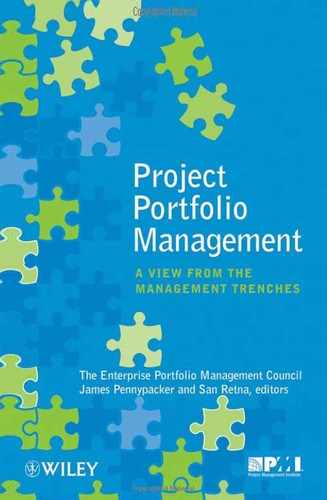8.7. PROJECT EXECUTION AND REVIEW
If the project is formally authorized, the next step is for the project portfolio support folks to analyze the project portfolio and develop a recommendation of priorities (Step 7) based on scores and project dependencies and constraints for consideration by the design review board (DRB). The DRB will examine the facts as we know them, the recommended priorities, and the project dependencies and constraints, and then work toward an agreement on the priorities of each project in the portfolio. This is where the value of discussion and consensus comes into play. The scores themselves do not always dictate the actual priority of each project. Rather, the scores are indications of how the projects relate to one another based on the importance, or weighting, given to the criteria used to evaluate the projects and portfolio as a whole. Once agreement is reached by the DRB, then the priorities of each project are recorded and published (Step 8).
After prioritization is determined, then the finance department is notified so the project is entered into the organization's budget, and the project is ready for execution (Step 9). Throughout its execution, the project's performance is monitored (Step 10). The project often must pass through decision-gate evaluations to determine whether to continue with the project, to put it on hold, or to kill it altogether.
Project reviews involve a reverification of the project's critical success factors—including resource availability and the continued validity of the business case—with the business sponsors. In addition, shifting business, technology, and market conditions can rearrange priorities. The decisions made in response to these shifting conditions often result in a realignment of the project portfolio, which may or may not affect other projects in the portfolio. Replanning may be required, including changes in resource allocation and scheduling.
As the project comes to completion, a process is put in place to document whether the benefits documented in the business case are actually realized (Step 11). This process may take a significant amount of time to complete based on the type of project and the timeframe for which benefits may actually occur. But the process must be put in place to actually document this information before the project comes to a close. This information on the individual project is added to the documentation used to analyze the performance of the entire portfolio.
Finally the project is closed (Step 12). This process insures that all of the other processes required have been completed and the completed product is handed off to others, or simply closed if the project has been cancelled. Again, this information on the individual project is added to the documentation used to analyze the performance of the entire portfolio.
